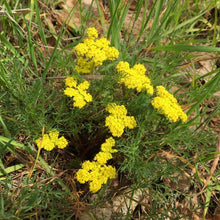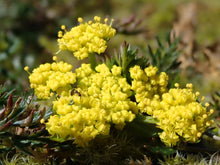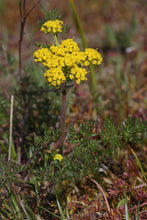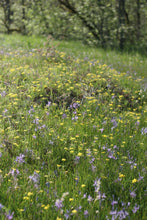
Lomatium utriculatum
This cheery, carrot-family plant is known by several names including common Lomatium, bladder parsnip, fine-leaf desert parsley and spring gold; the latter being arguably the most fitting since it is one of the earliest, most abundant and longest-blooming wildflowers. It grows in an upright clump, with intricate, feathery foliage primarily at its base. The brilliant yellow blooms develop in compact clusters on upright stems typically around a foot tall. Flowers can start as early as March in the Portland metro area and persist well into the summer, which is great news for the plethora of pollinator species it supports.
- Plant type/canopy layer: deciduous, perennial, herbaceous plant
- Size at maturity: 6-24” tall and equally wide (over many years)
- Light requirements: full sun to partial shade
- Moisture requirements: dry to moist soil
- Bloom time: Jan - Aug (March - Aug in the Portland Metro area)
- Growth rate/ease: slow growing, moderately easy to grow
- Wildlife support: leaves provide critical early-spring forage for many wildlife species; flowers attract and support many native pollinators including being a primary source of nectar to the endangered Taylor’s checkerspot (Euphydryas editha taylori) butterfly; seeds attracts and feeds birds; overall plant is host to caterpillars/larvae of native moths and butterflies, including the Anise and Indra swallowtails
- Native habitat/range: common in open areas on hillsides, slopes, meadows, scrubland, and forest openings on both sides of the Cascades as well as coastal areas from 0–2600m from southern California to British Columbia. Portland Plant List - yes.
- Special features & uses: landscape uses include butterfly and other pollinator gardens; edible young leaves and shoots are a special early spring treat that can be eaten raw or cooked into vegetable dishes - but only harvest a few young shoots from each plant each spring as to not deplete the plant, the hearty taproots are also edible (thereby sacrificing the plant) and can be dug during dormancy in fall or winter, then cleaned, peeled, and cooked like a parsnip with other root crops or ground into flour; medicinally used by indigenous groups for millenia for stomach issues, headaches, and more. CAUTION: can resemble poison hemlock. Always confirm identification and verify information from multiple sources before consuming wild plants.
Gardening with Spring Gold: Lomatium in general are relatively easy to care for and drought-tolerant once established, provided they are given the right conditions. Plant this beauty in full to mostly sunny areas with loose, well-drained soil and its fern-like leaves will lend a lush appearance to dry areas. If you have gophers, consider taking care to protect the roots from predation by encasing it in an underground wire cage. It will spread by seed over the years, thereby increasing the size of its patch. Feel free to relocate the new babies as desired. Companion plants include pacific madrone, balsamroot, and wild strawberries. It is relatively slow-growing and takes several years to develop a large taproot. If you’re interested in growing this species as a first food, integrate many into your landscape and be patient.
Photo Credit 1 (habit/flowers/form): © Ed Alverson, some rights reserved (CC-BY)
Photo Credit 2 (flower head close-up): © Nolan Exe, some rights reserved (CC-BY)
Photo Credit 3 (habit/form): "Lomatium utriculatum 6416" by Walter Siegmund (talk) is licensed under CC BY-SA 3.0.
Photo Credit 4 (meadow): Karli Del Biondo, Beetles and Bees







